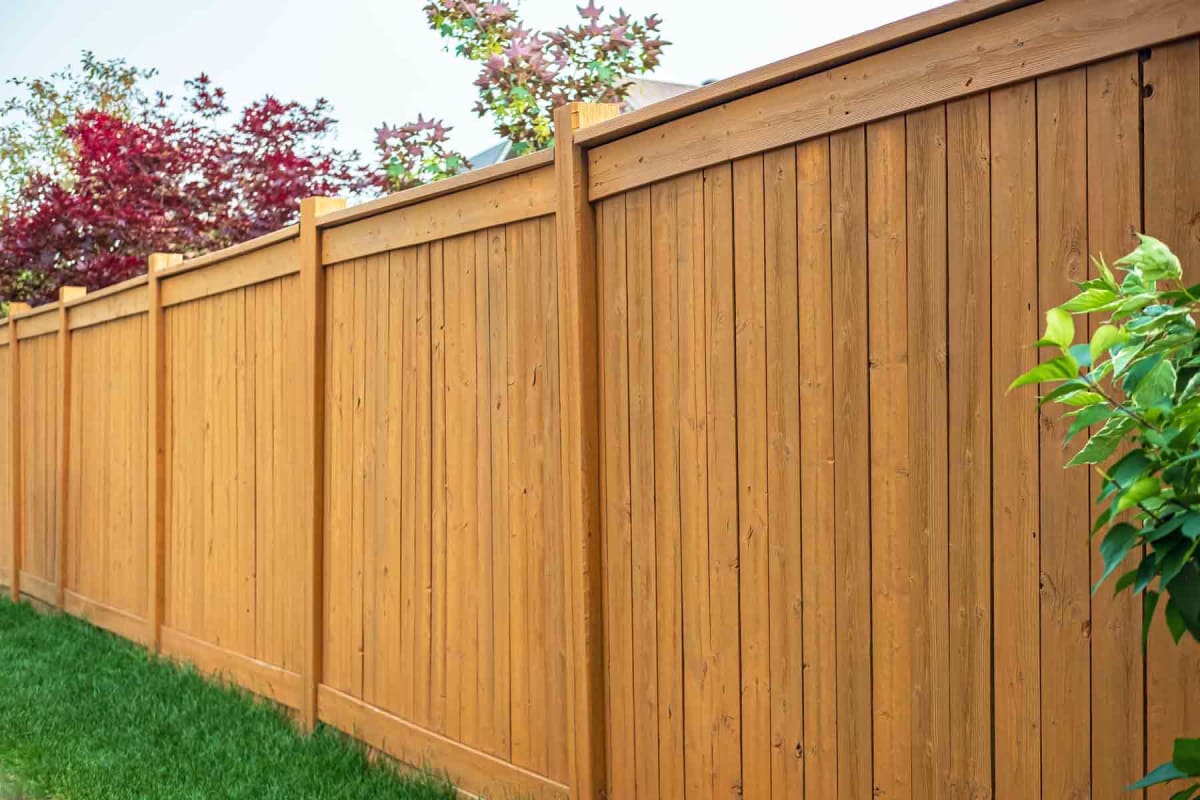All Categories
Featured
Installing a fencing around your residential or commercial property can improve personal privacy, security, and appearances. However, before starting, it's crucial to establish whether you need an authorization for the setup. Different areas have varying laws, and understanding what's needed will certainly assist guarantee that your fence is legal, risk-free, and constructed according to local standards. Right here's an overview to help you browse the permitting process for fence installation.
Why Are Permits Needed? Authorizations are required to guarantee that the installation of your fence fulfills neighborhood building ordinance and zoning laws. These policies remain in place to preserve the safety and security, look, and performance of residential properties in your area. In addition, permits aid avoid disputes with next-door neighbors concerning residential property lines, fence height, and various other architectural details.
Regional authorities require permits to check points like exposure at crossways, public safety, and possible damage to energies like water pipes or electric lines. The procedure aids keep your fencing job certified with safety and legal criteria.
Kinds Of Authorizations You Might Require. The precise licenses required can vary depending on your place and the specifics of your job. Below are one of the most usual kinds of authorizations you might require:
Building Permit. Numerous cities and counties need a building permit for fencings that go beyond a particular elevation, generally over 6 feet. This permit ensures that your fencing abides by structural criteria, especially if it's made from certain products such as concrete, metal, or block. Building permits are additionally needed when your fencing affects the total landscape, like producing a sound barrier or obstructing a sightline.
Zoning Authorization. Zoning permits are issued to guarantee that your fence abides by regional zoning laws. These regulations might regulate where fencings can be put on your building (e.g., side, front, or backyard), just how high they can be, and whether they can be mounted near streets or pathways. Zoning regulations are put in place to preserve the total visual appeals of areas and preserve website traffic security.
Setback License. Some locations have obstacle policies that determine how much a fencing should be from the home line, road, or certain public spaces. Trouble authorizations are created to ensure that your fence doesn't conflict with neighboring residential properties or public areas. A residential property survey may be called for to validate residential property lines prior to acquiring this kind of permit.
HOA Authorization. If you reside in a neighborhood governed by a Homeowners Association (HOA), you might need to get approval from the HOA before installing a fencing. HOAs often have stringent standards regarding the type of fencing allowed the community, including its product, color, and elevation. Constantly consult the HOA prior to beginning your project to avoid any problems.
How to Apply for a Fence Permit. The procedure for obtaining an authorization commonly entails several steps:
Research Study Citizen Laws. Beginning by examining your city or area's site to learn the specific requirements for fence installation. You might need to visit the neighborhood preparation or building division face to face for more detailed information.
Prepare Your Application. Many cities will certainly call for an application form, which consists of details concerning your intended fence, such as:
![]()
The kind of fencing product (timber, plastic, chain-link, etc) The intended elevation of the fencing. The location and dimensions of the fence. A residential property study (to verify residential or commercial property lines) Send the Application. After finishing the application, submit it to the neighborhood structure or zoning office. You may be required to pay a fee depending upon your area and the dimension of your fence. Charges can differ, yet they normally cover the cost of processing your request and reviewing your plans.
Wait for Approval. As soon as your application is sent, the local authorities will review your strategies to guarantee they meet zoning and constructing requirements. This procedure can take anywhere from a few days to a number of weeks, relying on the intricacy of the project and the volume of permit requests in your location.
![]()
Examination (If Required) In some instances, you may need to set up an examination after the fence is mounted to guarantee it meets the called for standards. If this step is essential., your local workplace will let you understand.
When You Do Not Need an Authorization,. Not every fence installation needs a license. Some circumstances where you might not require a permit include:
Installing a fence that's under a certain elevation (commonly 3-4 feet for front lawns) Replacing an existing fencing with one that coincides elevation and material. Mounting a short-lived fencing (e.g., for construction or gardening) Even if your job seems small, it's always a good idea to check with neighborhood authorities to make sure you're complying with the proper process.
Repercussions of Not Getting a Permit. Setting up a fencing without the needed authorization can lead to significant consequences, consisting of penalties, removal of the fencing, and pricey reinstallation. Sometimes, local authorities might need you to modify the fencing if it does not meet code requirements. Additionally, not getting a permit might create conflicts with neighbors, particularly if the fence is put improperly or breaches regional height laws.
Final thought. Before setting up a fencing, it is necessary to investigate the certain allowing demands in your area. If a permit is needed and to make certain that you're following the proper procedure, contact your neighborhood structure or zoning department to discover out. By safeguarding the appropriate authorizations, you'll make certain and avoid lawful issues that your fencing installment is risk-free, certified, and convenient.
Why Are Permits Needed? Authorizations are required to guarantee that the installation of your fence fulfills neighborhood building ordinance and zoning laws. These policies remain in place to preserve the safety and security, look, and performance of residential properties in your area. In addition, permits aid avoid disputes with next-door neighbors concerning residential property lines, fence height, and various other architectural details.
Regional authorities require permits to check points like exposure at crossways, public safety, and possible damage to energies like water pipes or electric lines. The procedure aids keep your fencing job certified with safety and legal criteria.
Kinds Of Authorizations You Might Require. The precise licenses required can vary depending on your place and the specifics of your job. Below are one of the most usual kinds of authorizations you might require:
Building Permit. Numerous cities and counties need a building permit for fencings that go beyond a particular elevation, generally over 6 feet. This permit ensures that your fencing abides by structural criteria, especially if it's made from certain products such as concrete, metal, or block. Building permits are additionally needed when your fencing affects the total landscape, like producing a sound barrier or obstructing a sightline.
Zoning Authorization. Zoning permits are issued to guarantee that your fence abides by regional zoning laws. These regulations might regulate where fencings can be put on your building (e.g., side, front, or backyard), just how high they can be, and whether they can be mounted near streets or pathways. Zoning regulations are put in place to preserve the total visual appeals of areas and preserve website traffic security.
Setback License. Some locations have obstacle policies that determine how much a fencing should be from the home line, road, or certain public spaces. Trouble authorizations are created to ensure that your fence doesn't conflict with neighboring residential properties or public areas. A residential property survey may be called for to validate residential property lines prior to acquiring this kind of permit.
HOA Authorization. If you reside in a neighborhood governed by a Homeowners Association (HOA), you might need to get approval from the HOA before installing a fencing. HOAs often have stringent standards regarding the type of fencing allowed the community, including its product, color, and elevation. Constantly consult the HOA prior to beginning your project to avoid any problems.
How to Apply for a Fence Permit. The procedure for obtaining an authorization commonly entails several steps:
Research Study Citizen Laws. Beginning by examining your city or area's site to learn the specific requirements for fence installation. You might need to visit the neighborhood preparation or building division face to face for more detailed information.
Prepare Your Application. Many cities will certainly call for an application form, which consists of details concerning your intended fence, such as:

The kind of fencing product (timber, plastic, chain-link, etc) The intended elevation of the fencing. The location and dimensions of the fence. A residential property study (to verify residential or commercial property lines) Send the Application. After finishing the application, submit it to the neighborhood structure or zoning office. You may be required to pay a fee depending upon your area and the dimension of your fence. Charges can differ, yet they normally cover the cost of processing your request and reviewing your plans.
Wait for Approval. As soon as your application is sent, the local authorities will review your strategies to guarantee they meet zoning and constructing requirements. This procedure can take anywhere from a few days to a number of weeks, relying on the intricacy of the project and the volume of permit requests in your location.

Examination (If Required) In some instances, you may need to set up an examination after the fence is mounted to guarantee it meets the called for standards. If this step is essential., your local workplace will let you understand.
When You Do Not Need an Authorization,. Not every fence installation needs a license. Some circumstances where you might not require a permit include:
Installing a fence that's under a certain elevation (commonly 3-4 feet for front lawns) Replacing an existing fencing with one that coincides elevation and material. Mounting a short-lived fencing (e.g., for construction or gardening) Even if your job seems small, it's always a good idea to check with neighborhood authorities to make sure you're complying with the proper process.
Repercussions of Not Getting a Permit. Setting up a fencing without the needed authorization can lead to significant consequences, consisting of penalties, removal of the fencing, and pricey reinstallation. Sometimes, local authorities might need you to modify the fencing if it does not meet code requirements. Additionally, not getting a permit might create conflicts with neighbors, particularly if the fence is put improperly or breaches regional height laws.
Final thought. Before setting up a fencing, it is necessary to investigate the certain allowing demands in your area. If a permit is needed and to make certain that you're following the proper procedure, contact your neighborhood structure or zoning department to discover out. By safeguarding the appropriate authorizations, you'll make certain and avoid lawful issues that your fencing installment is risk-free, certified, and convenient.
Latest Posts
Unlock WyHy Federal Credit Union – Top Benefits for Your Financial Future
Published en
1 min read
Discover Premier Car Repair Services offered by Montclare Auto Repair – Drive with Confidence
Published en
1 min read
Uncover Montclare Auto Repair’s Most Popular Auto Repairs and Why Drivers Rely On Them
Published en
1 min read
More
Latest Posts
Unlock WyHy Federal Credit Union – Top Benefits for Your Financial Future
Published May 23, 25
1 min read
Discover Premier Car Repair Services offered by Montclare Auto Repair – Drive with Confidence
Published May 22, 25
1 min read
Uncover Montclare Auto Repair’s Most Popular Auto Repairs and Why Drivers Rely On Them
Published May 21, 25
1 min read